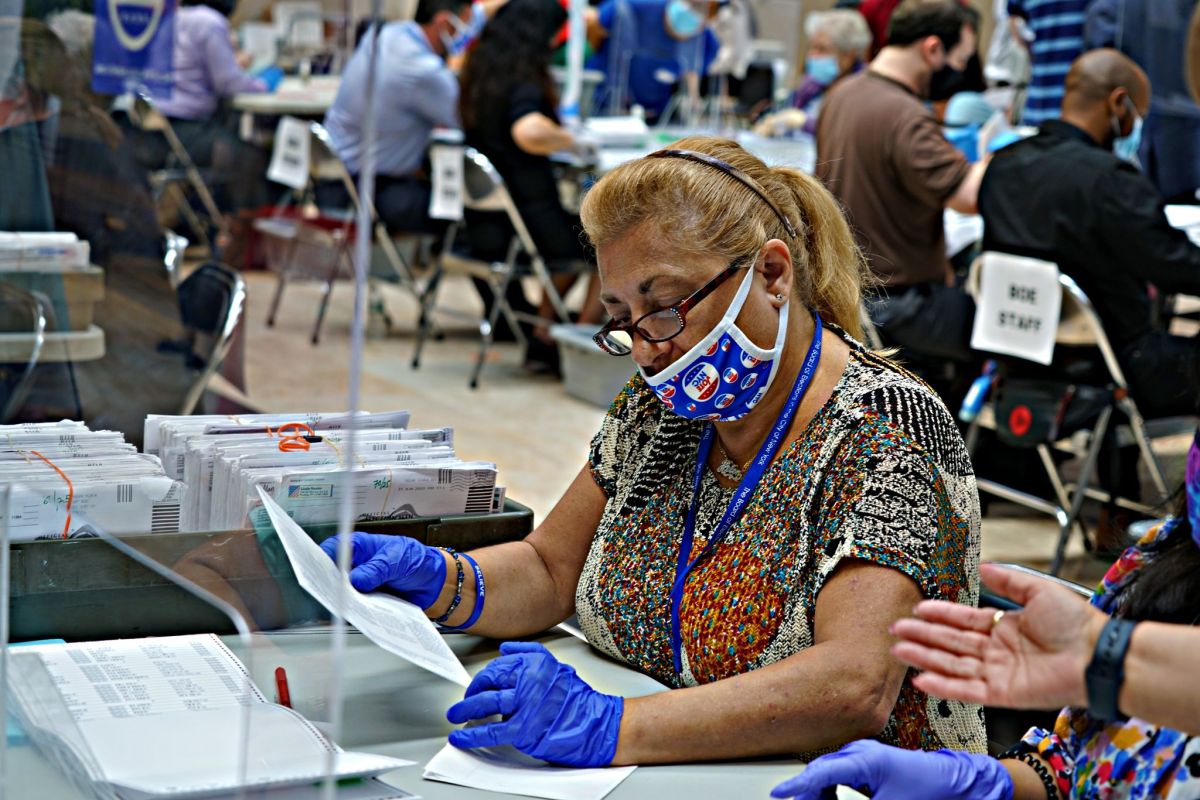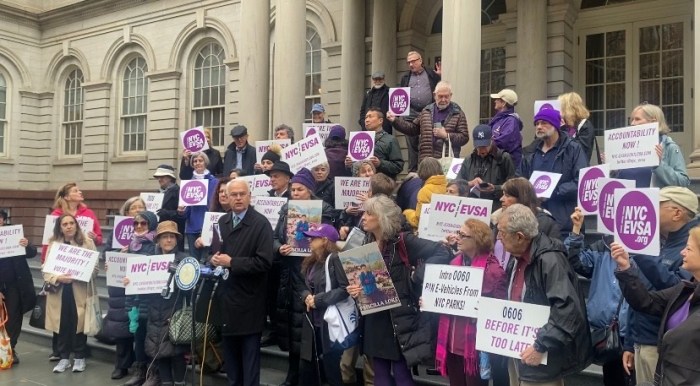New York City Board of Elections workers are continuing to count absentee ballots from last month’s Democratic primary election after starting to do so on Wednesday, July 8, inside the Helen Marshall Center in Queens Borough Hall.
The performance and entertainment space in Queens Borough Hall was transformed into a makeshift ballot counting operation, replete with social distancing measures aimed to keep the dozens of ballot counters safe from the threat of COVID-19. With nearly 90,000 ballots to count, final results are likely at least a week away.

According to the Board of Elections, around 50 percent of the 175,863 absentee ballots requested in Queens were returned in time to be counted.
But of those returned, around a quarter were deemed invalid, according to Board of Elections data provided by the progressive PAC, The New Reformers.
Absentee ballots can be rejected for myriad reasons, including errand marks on the ballot, missing signatures, or a missing postmark. Voters submitting their ballot absentee were also asked by the Board of Elections to place their ballots in not one, but two envelopes, both of which needed to be sealed. If these directions were not followed, the ballot could be thrown out.
“The issue is that ballots can be rejected for any ridiculous number of arcane reasons,” said Benjamin Rosenblatt, the president of Tidal Wave Strategies, a political consulting firm. “The way the law and the Board of Elections works is that it works against the voters and works in favor of rejecting ballots over accepting ballots.”
According to The New Reformers, nearly 22,000 ballots were rejected in Queens.
The Board of Elections did not respond to QNS’ request for comment before press time.
The absentee ballot count in Queens began with Assembly Districts 23, 24 and 25. In addition to those districts, the Board of Elections had counted absentee ballots in Assembly Districts 26, 27, 28, 29, 30, 31 and 32, as of Wednesday, July 15.
Results of the elections within the counted districts have not yet been made available online.

In some state Assembly races, like the District 36 race between incumbent Aravella Simotas and challenger Zohran Mamdani, there are nearly 10,000 votes still to be counted. In other races, like in District 39, where incumbent Catalina Cruz holds a commanding lead over her challenger, there are less than 3,000 votes left to count.
The race for Queens borough president was one of the most notable races on the ballot last month. While Councilman Donovan Richards currently leads the contest with about 37 percent of the vote — a 10-point lead over his closest challenger, Elizabeth Crowley — the results from the race won’t likely be known until the last day of counting.
There are a handful of other close races that could change drastically after the absentee ballots are all accounted for.
In the 12th Congressional District, Congresswoman Carolyn Maloney holds a narrow lead over challenger Suraj Patel after June’s in-person voting. The incumbent received a little over 41 percent of the vote, while Patel received nearly 40 percent of the votes counted. With 9,713 votes left to count, Maloney’s lead could begin to dissipate.
In the 31st Assembly District, Khaleel Anderson holds a slim lead over his five opponents. Anderson received 38 percent of the vote; Richard David received nearly 28 percent; Lisa George garnered 18 percent of the votes; Shea Uzoigwe got 7 percent of the vote; and Derrick Deflorimonte and Tavie Blakley received less than 5 percent of the vote each.
In one of the closest races in the borough, Mamdani holds about a 600 vote lead over Simotas in Assembly District 36. With nearly 10,000 votes left to count, the outcome of the race is far from decided.
In Queens, votes will be counted from 9 a.m. until 7 p.m. on weekdays and from 9 a.m. until 4 p.m. on the weekends.
Additional reporting by Dean Moses.
Check back with QNS.com for results of the Queens Democratic primary races.




































